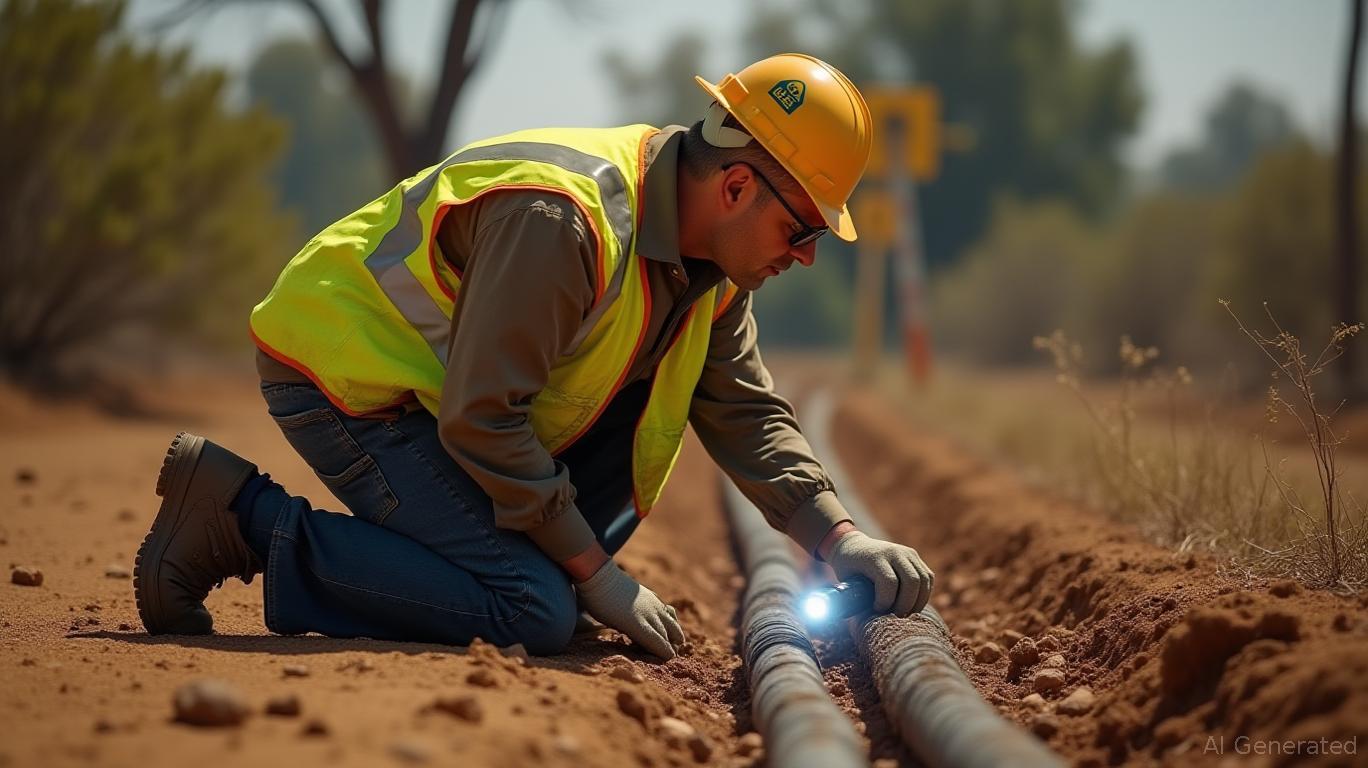PG&E: A Utility Gem in the Rough?
Pacific Gas & Electric (PCG) has long been a bellwether of California's energy infrastructure, yet its stock has faced relentless headwinds in recent years. From wildfire liabilities to regulatory uncertainties,
has navigated crises that have dented investor confidence. However, beneath the noise, the company's fundamentals suggest a compelling opportunity for investors willing to look past short-term turbulence. Let's dissect whether PG&E's current valuation reflects a durable discount or a fleeting mispricing.Valuation: A Discounted Utility or Undervalued Asset?
PG&E's trailing P/E ratio of 15.2 as of May 2025 sits below its five-year average, while its forward P/E of 10.7 signals even more optimism. To put this in context, competitors like Edison International (EIX) and Xcel Energy (XEL) trade at 19.9x forward earnings, suggesting PG&E is undervalued relative to peers. This divergence isn't irrational—PG&E's balance sheet carries a debt-to-equity ratio of 1.94, higher than most utilities—but its debt/EBITDA ratio of 6.33 remains within a manageable range for a regulated utility.
The stock's volatility—peaking at $20.43 in January 2025 before sliding to $14.39 in June—reflects investor skepticism. Yet this dip may offer a buying opportunity. PG&E's $31.6 billion market cap contrasts with its $89.5 billion enterprise value, highlighting the importance of its regulated asset base. For a company with 5.3 million electricity customers and a five-year $63 billion capital plan, the core business remains a cash-generating machine.
Operational Resilience Amid Crisis
PG&E's challenges are well-documented: wildfire-related costs, regulatory scrutiny, and dilutive equity raises. However, progress on key fronts suggests these headwinds are temporary.

- Wildfire Mitigation: The company has buried 24 miles of power lines and reinforced 26 miles of poles in high-risk zones. While costs remain elevated ($350–$400 million in tax-affected interest expenses alone), these investments reduce long-term liability exposure.
- Rate Stabilization: Residential electric rates fell year-over-year in March 2025, and flat gas rates for 2025 ease affordability pressures. New customer growth—3,000+ electric accounts and 400 EV charging ports—adds load growth, which can lower unit costs over time.
- Diablo Canyon's Role: The nuclear plant's top-tier regulatory performance ensures reliable baseload power, reducing reliance on volatile renewables.
Debt and Dividends: Balancing Risk and Reward
PG&E's debt load is a legitimate concern. The $1.94 debt-to-equity ratio is high, but utilities often leverage assets to fund infrastructure. The company's $63 billion capital plan is fully funded, and cost-cutting (a 2% O&M reduction target) aims to bolster margins.
The dividend, currently yielding 0.69%, is modest but sustainable. With a payout ratio of just 1.7%, PG&E retains ample flexibility to reinvest or boost dividends if earnings recover. For income-focused investors, this low yield may be a drawback, but the dividend's stability—despite earnings dips—hints at management's conservative prioritization of capital structure.
The Bull Case: Catalysts on the Horizon
PG&E's valuation hinges on resolving two overhangs: wildfire costs and regulatory approvals.
- Wildfire Costs: Amortization of the Wildfire Fund and bankruptcy-related expenses are non-recurring. Once these fade, earnings could rebound sharply.
- Rate Hikes: California's Public Utilities Commission (CPUC) must approve future rate adjustments. PG&E's track record of securing modest but steady increases (e.g., flat gas rates in 2025) suggests it can stabilize cash flows.
Historically, rate approvals have acted as a modest positive catalyst. A backtest of PG&E's performance during CPUC rate increase approvals from 2020–2025 shows an average return of 7.33% over 60 trading days. However, this came with significant volatility—28.65% annualized—and a maximum drawdown of -39.93%, resulting in a low Sharpe ratio of 0.05. While the strategy captured upside, the high risk underscores the need for a long-term horizon and careful risk management.
If these catalysts materialize, PG&E's P/E could expand toward its historical average, lifting the stock. Meanwhile, its $89.5 billion enterprise value vs. $63 billion in planned capital spending implies assets are being built at a discount to their long-term utility value.
The Bear Case: Persistent Headwinds
Bears argue that PG&E's liabilities—both financial and reputational—are too vast to ignore. The $400 million in interest expenses alone could strain margins, and California's regulatory environment remains unpredictable. A misstep in wildfire safety or a failed rate case could reignite selling pressure.
Investment Thesis
PG&E presents a high-risk, high-reward scenario for investors with a long-term horizon. The valuation discount is steep, but the company's regulated moat and capital plan provide a floor. Buyers should focus on dips (e.g., below $14) and consider averaging into positions. Meanwhile, short-term traders might avoid it due to volatility.
For income investors, the dividend's paltry yield makes PG&E a secondary choice. However, if PG&E's earnings stabilize, a dividend hike could follow, rewarding patient holders.
Final Take
PG&E's struggles are real, but its fundamentals—stable cash flows, improving safety metrics, and a funded capital plan—suggest it's more than just a crisis stock. At a forward P/E of 10.7, the market has already priced in much of the bad news. For investors willing to bet on regulatory and operational turnaround, PG&E could be a diamond in the rough.
Final recommendation: PG&E is a Hold with Buy potential at lower prices. Monitor CPUC rulings and wildfire cost resolutions closely.

Comments
No comments yet